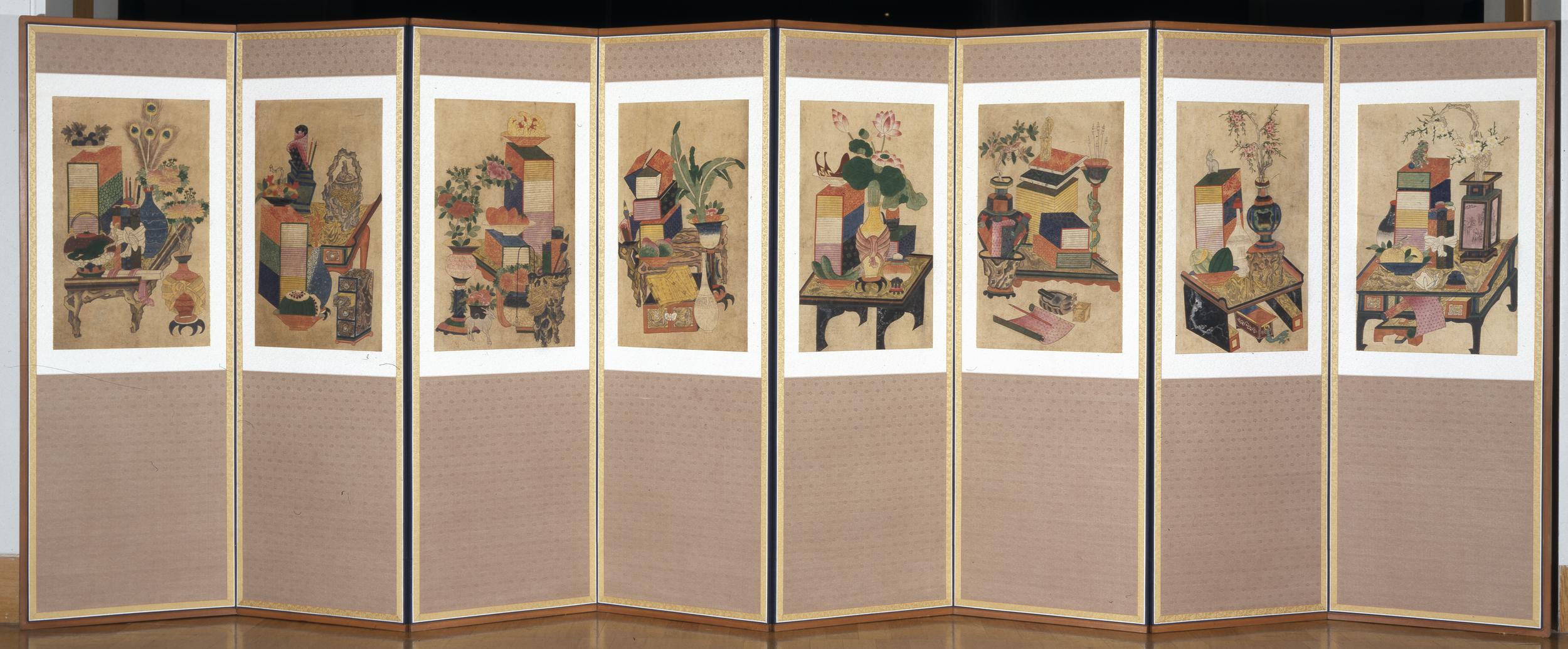
| # | Contents |
|---|---|
| Title | Munbangdo (문방도 병풍 文房圖 屛風) |
| Subject | Books and objects associated with scholars |
| Creator | Unidentified Korean artist |
| Format | Eight-panel stacked-type 'munbangdo' screen |
| Type | Painting and Drawings |
| Medium | Ink and color on paper |
| Description |
Portal 2000: 'Chaekkori' paintings of piles of books and scholar's equipment are an example of a subject which occured both in court paintings and in folk paintings. King Chongjo was particularly fond of 'chaekkori' paintings; his interest may have been roused by the use of Western techniques of perspective, possibly under the influence of Jesuit painters in Beijing such as Giuseppe Castiglione. The table-type 'chaekkori' was used by less afluent people to enable them too to decorate their ordinary homes with depictions of Confucian scholarly objects. These paintings also included many auspicious fruit, animals and non-scholarly objects which had significance in the context of Korean folk beliefs; for example, many-seeded fruits such as melons and pomegranates, representing the wish for many children. Ch'aekkori (literally 'books and things') screens were painted in ink and mineral pigments in three formats. This screen uses the most common, the 'table' format, where still-life arrangements form architectionic constructions. It is so named because tables or other pieces of furniture are always incorporated into the theme. Of the other formats, one shows objects isolated from each other and painted in vertical columns; the other, called trompe l'oeil (illustrated here by an example in the Hoam Museum, Seoul), creates an illusion of a three-dimensional book-case, combining elements of both Western and East Asian perespective. 2016 National Research Institute of Cultural Heritage catalogue entries: |
| Rights | The British Museum |
| Registration number |
1994,0414,0.1 |
| Period | Late 19thC - early 20thC |
| Culture | Korean |
| Geographic Origin | Korea |
| Dimensions |
Height: 138.80 centimetres (total) |
| Resource URL | https://www.britishmuseum.org/collection/object/A_1994-0414-0-1 |




